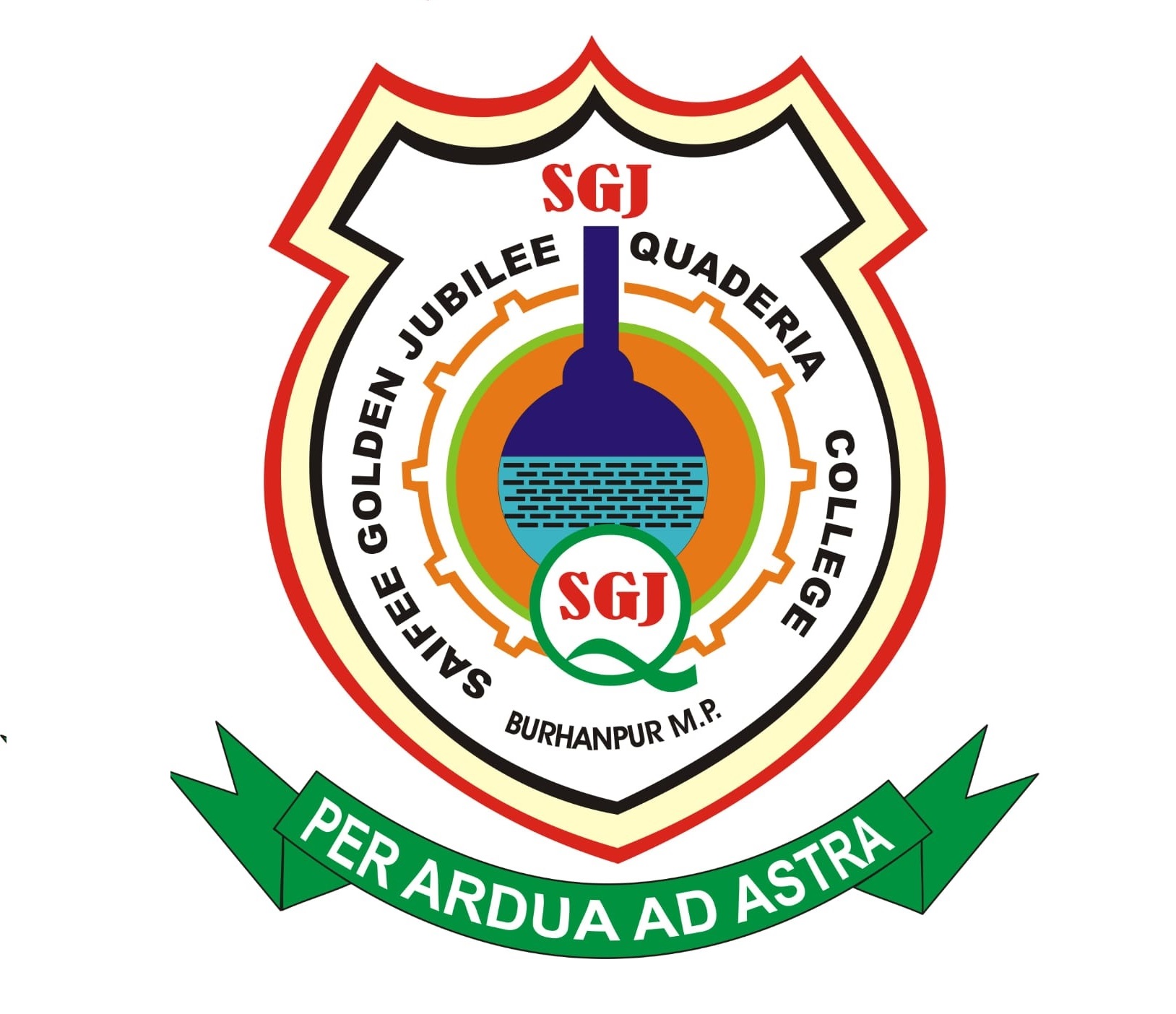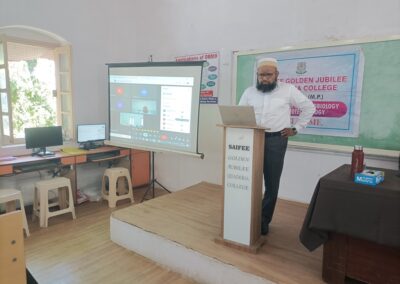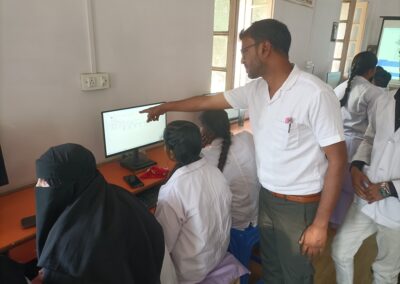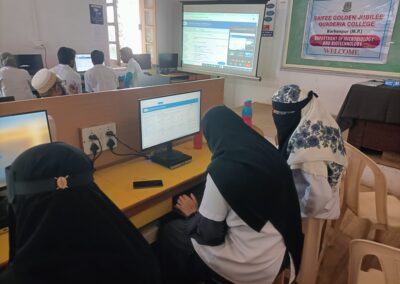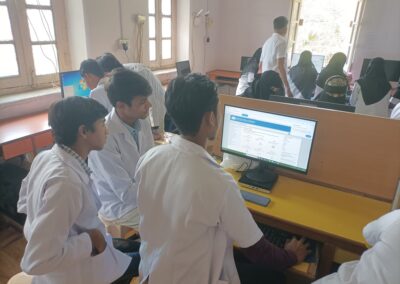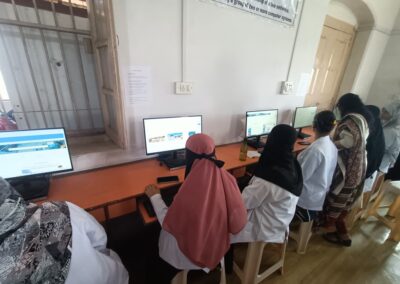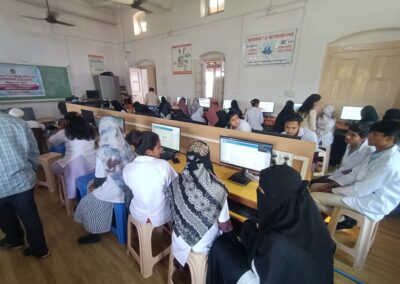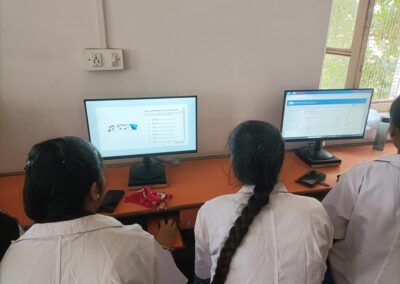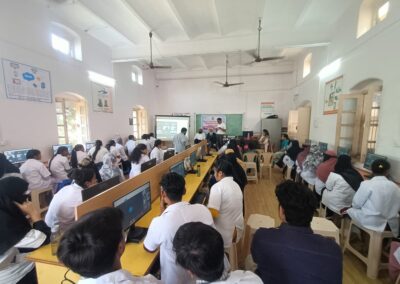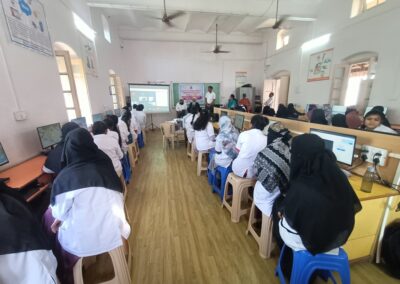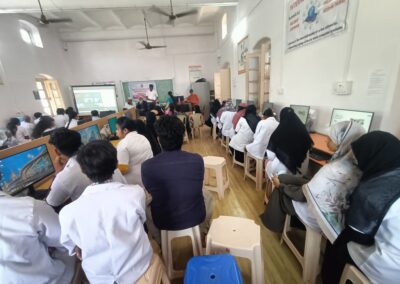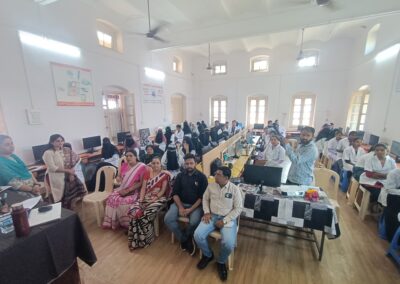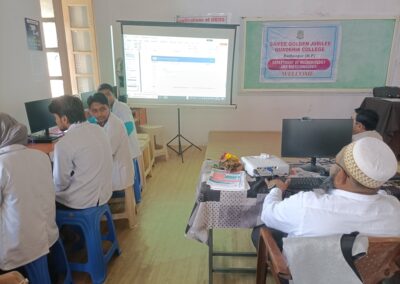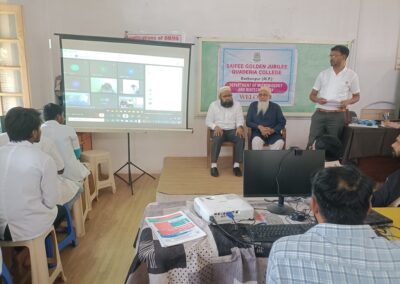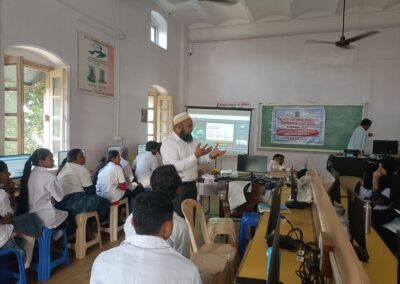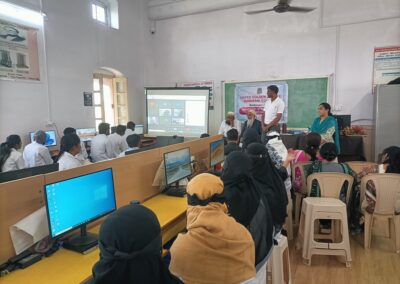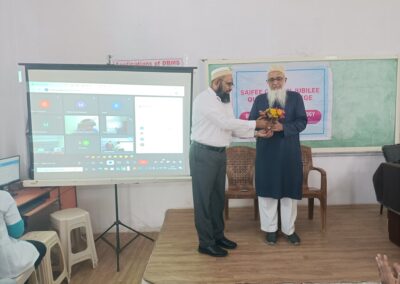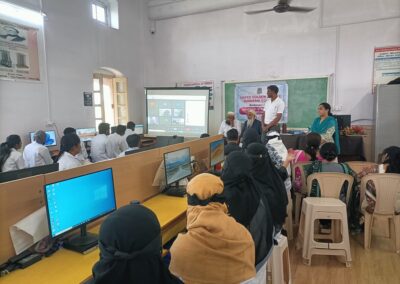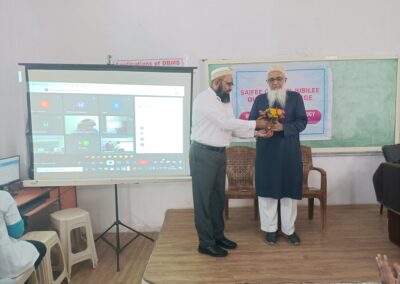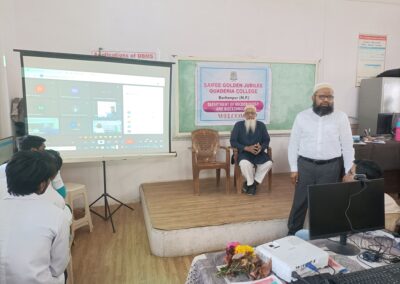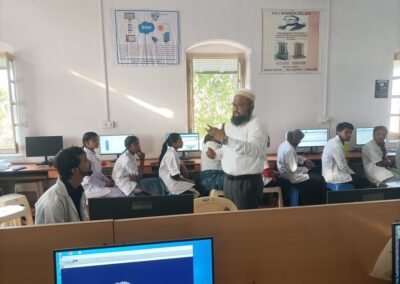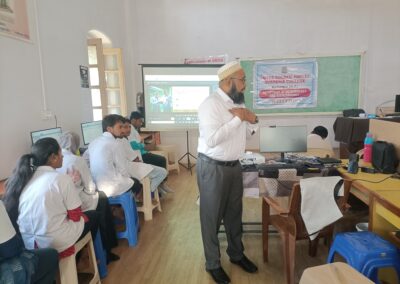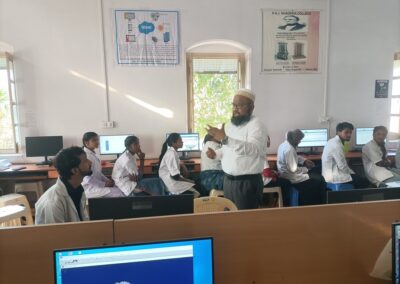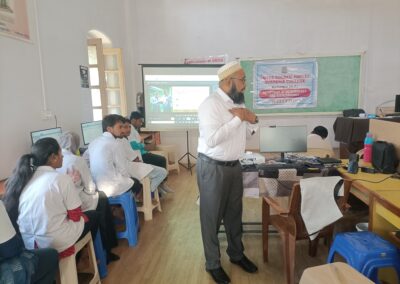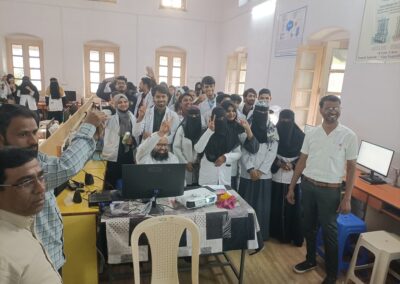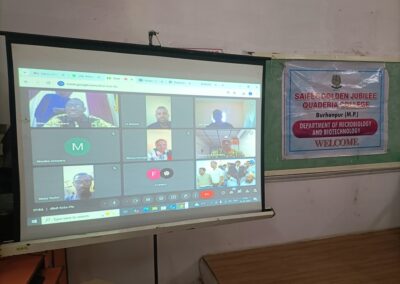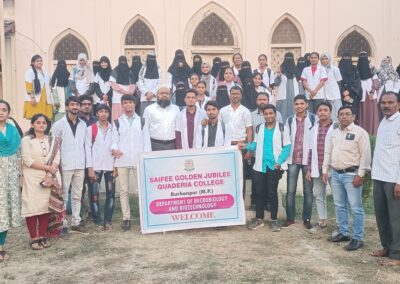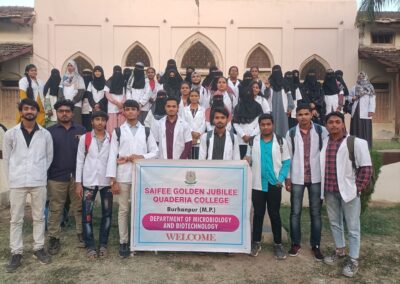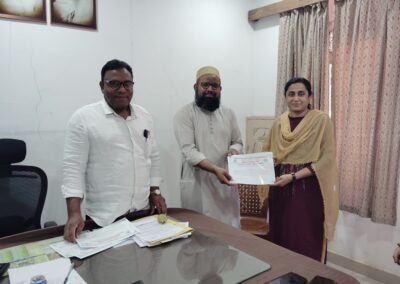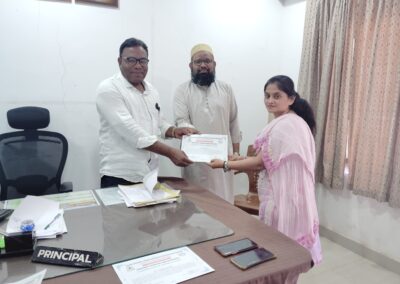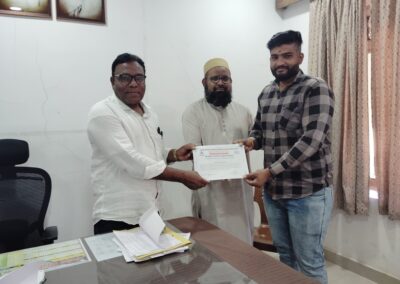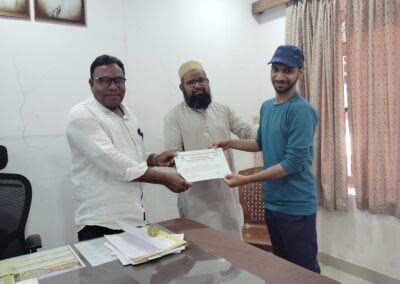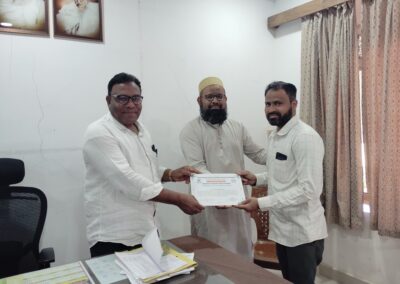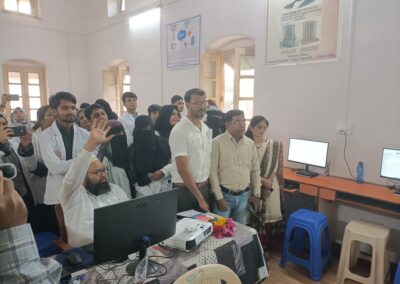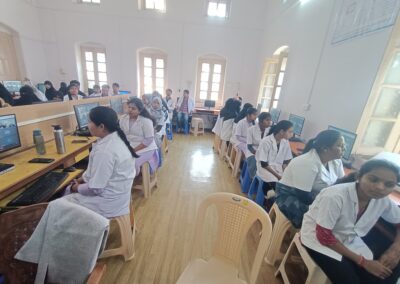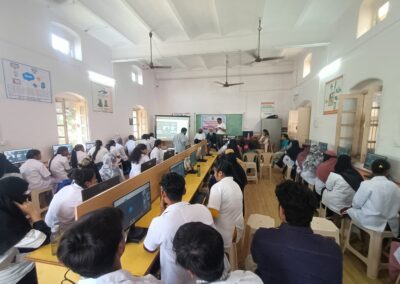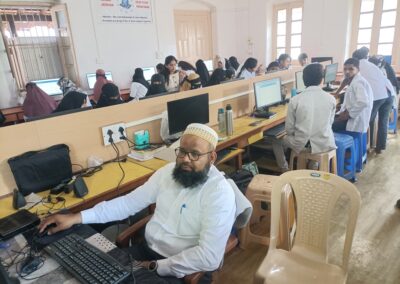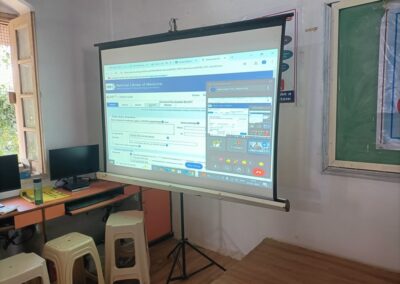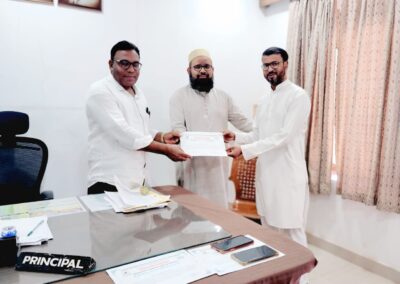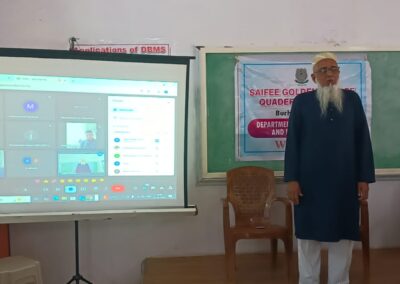“On February 25, 2025, a groundbreaking workshop on ‘Basics of Bioinformatics’ was successfully conducted through a collaborative effort between Saifee Golden Jubilee Quaderia College, India, and the University scientific lebre of Bamako (USLB), West Africa. This pioneering initiative brought together esteemed experts and enthusiastic participants to explore the fascinating realm of bioinformatics, paving the way for future collaborations and innovations in the field.”
“Objective:
The objective of this workshop is to provide participants with knowledge of the fundamental principles, techniques, and applications of bioinformatics. Through this workshop, we aim to equip participants with the skills and knowledge required to pursue research and development in the field of bioinformatics.
Specific Objectives:
– To provide an understanding of the fundamental principles and techniques of bioinformatics.
– To inform participants about the research and development opportunities in the field of bioinformatics.
– To equip participants with the skills and knowledge required to pursue research and development in the field of bioinformatics.
– To promote interaction and collaboration among participants in the field of bioinformatics.”
Introduction of the Chief Guest – Dr. Hamadoun Garba CISSE
We are deeply honored to welcome Dr. Hamadoun Garba CISSE, President of USLB, as our Chief Guest today. Dr. CISSE is a visionary leader, a dedicated academician, and a dynamic individual who constantly strives for innovation and progress in education and research. His commitment to empowering students and improving society through scientific advancements is truly inspiring.
We extend our heartfelt gratitude to him for gracing this occasion with his presence.
“Special Address by Guest of Honour, Mansoor Savek Ji”
Alternatively, you could also use:
Inaugural Address
“Inaugurating the Programme with Guest of Honour, Mansoor Savek Ji”
Introduction of the Keynote Speaker – Dr. Talib Yusuf Abbas Hussain
It is a privilege to introduce Dr. Talib Yusuf Abbas Hussain, the Dean of Burhani College, Mumbai and additional charge as a Dean of Quaderia College, also an expert in Bioinformatics, Genomics, and Computational Biology. Dr. Talib Yusuf has 17 years of teaching experience, including 6 years in academic administration. His contributions to bioinformatics research, gene expression analysis, and computational biology have been widely recognized. He has played a pivotal role in establishing Burhani College, Quaderia College, Maulana Azad College in research and development at various aspects. As the architect behind today’s workshop, his dedication and expertise have shaped the entire program, ensuring that participants gain invaluable insights into bioinformatics applications.
Benefits for Students:
– Gain fundamental knowledge of bioinformatics principles, techniques, and applications
– Develop skills in bioinformatics tools and software
– Enhance understanding of the role of bioinformatics in various fields, such as medicine, agriculture, and environmental science
– Network with peers and experts from India and West Africa
– Exposure to research opportunities and collaborations between Indian and West African institution
– Stay updated on the latest bioinformatics tools, techniques, and applications
– Collaborate with researchers from India and West Africa on joint research projects
– Share knowledge and expertise with students and early-career researchers
– Enhance research capacity and productivity through access to new bioinformatics tools and techniques
– Foster partnerships between Indian and West African institutions for future research collaboration
Faculty Involvement
– Azharuddin, HOD of Biotechnology
– Ritu Malvi, HOD of Microbiology
Student Involvement
– Priyanka (4th-year Microbiology student)
– Harsha (4th-year Microbiology student)
– Misbah (4th-year Microbiology student)
– Dipali (4th-year Microbiology student)
Event Participation
The event saw participation from:
– A total of 160 students from Africa and Burhanpur, India. Definition and Classification of Biological Databases
Definition:
A biological database is a collection of data and information related to biology, which is stored and managed in a way that allows for efficient retrieval and analysis.
Classification:
Biological databases can be classified into the following categories:
1. Nucleotide databases (e.g. GenBank, RefSeq)
2. Protein databases (e.g. UniProt, PDB)
3. Genome databases (e.g. Ensembl, UCSC Genome Browser)
4. Structure databases (e.g. PDB, SCOP)
5. Functional databases (e.g. Gene Ontology, KEGG)
6. Literature databases (e.g. PubMed, Google Scholar)
Practical Work:
Follow these steps to complete the practical work on biological databases:
1. Visit the GenBank database and search for a gene or protein.
2. Visit the UniProt database and search for a protein.
3. Visit the Ensembl database and search for a genome.
4. Visit the PDB database and search for a protein structure.
5. Visit the Gene Ontology database and search for functional annotations of a gene or protein.
Essential Procedures:
1. Searching databases
2. Downloading data
3. Analyzing data
4. Interpreting results
5. Visualizing data…
Essential Procedures for PDB Structure and Visualization
Step 1: Retrieving PDB Structures
– Visit the Protein Data Bank (PDB) website ((link unavailable))
– Search for a protein structure using the PDB ID, protein name, or keyword
– Download the PDB file in the desired format (e.g., PDB, CIF, or XML)
Step 2: Visualizing PDB Structures
– Choose a molecular visualization tool (e.g., PyMOL, Chimera, or VMD)
– Import the PDB file into the visualization tool
– Adjust visualization settings (e.g., rendering, coloring, and lighting) to enhance structure
representation
Step 3: Analyzing PDB Structures
– Examine the protein structure using various visualization modes (e.g., cartoon, surface, or wireframe)
– Identify structural features (e.g., alpha helices, beta sheets, or binding sites)
– Analyze protein-ligand interactions, if applicable
Step 4: Measuring and Calculating Structural Properties
– Measure bond lengths, angles, and dihedral angles using the visualization tool
– Calculate structural properties (e.g., surface area, volume, or radius of gyration)
Step 5: Saving and Exporting Visualizations
– Save the visualization session for future reference
– Export the visualization as an image or animation (e.g., PNG, JPEG, or MPEG)
By following these essential procedures, you can effectively retrieve, visualize, analyze, and measure PDB structures, gaining valuable insights into protein structure and function.
Essential Procedures for Phylogenetic Tree Construction
Step 1: Data Collection
– Collect DNA or protein sequences from various organisms
– Ensure sequences are accurate, complete, and in the correct format
Step 2: Sequence Alignment
– Use alignment software (e.g., ClustalW, MUSCLE) to align sequences
– Adjust alignment parameters (e.g., gap penalties, substitution matrices) as needed
Step 3: Distance Calculation
– Calculate pairwise distances between sequences using methods (e.g., Jukes-Cantor, Kimura 2-parameter)
– Correct for multiple substitutions and other biases
Step 4: Tree Reconstruction
– Use tree reconstruction methods (e.g., NJ, ML, Bayesian) to build the phylogenetic tree
– Adjust parameters (e.g., substitution models, rate variation) as needed
Step 5: Tree Evaluation
– Evaluate tree topology and branch support using methods (e.g., bootstrap, jackknife)
– Assess tree robustness and accuracy
Step 6: Tree Visualization
– Use software (e.g., FigTree, TreeView) to visualize the phylogenetic tree
– Adjust visualization settings (e.g., branch colors, node labels) as needed
Step 7: Tree Interpretation
– Interpret the phylogenetic tree in the context of evolutionary relationships and biological
processes
– Draw conclusions about the evolutionary history of the organisms studied.
By following these essential procedures, you can construct a reliable and informative
phylogenetic tree that sheds light on the evolutionary relationships among organisms.
Outcomes and Benefits
1. Enhanced knowledge and understanding: Participants will gain a deeper understanding of phylogenetic tree construction, biological databases, and bioinformatics tools.
2. Improved research skills: Students will learn how to analyze and interpret biological data, and develop their critical thinking and problem-solving skills.
3. Networking opportunities: Participants will have the chance to interact with faculty members and students from different institutions, fostering collaborations and networking opportunities.
4. Career development: The workshop will provide students with a competitive edge in their future careers, particularly in fields related to bioinformatics, biotechnology, and microbiology.
5. International exposure: The participation of students from Africa and India will provide a unique opportunity for cultural exchange and international collaboration.
6. Development of soft skills: Participants will improve their communication, teamwork, and time management skills through group activities and presentations.
7. Access to resources and tools: Students will be introduced to various bioinformatics tools and resources, which will aid them in their future research endeavors.
Conclusion
The workshop on phylogenetic tree construction, biological databases, and bioinformatics tools has been a resounding success. With the participation of 160 students from Africa and India, the event has provided a unique platform for knowledge sharing, networking, and cultural exchange. The workshop has equipped participants with enhanced knowledge and understanding of bioinformatics tools and techniques, improved research skills, and access to resources and tools. The event has also fostered collaborations, career development, and international exposure.We hope that the knowledge and skills gained during the workshop will have a lasting impact on the participants’ future endeavors in bioinformatics, biotechnology, and microbiology.
